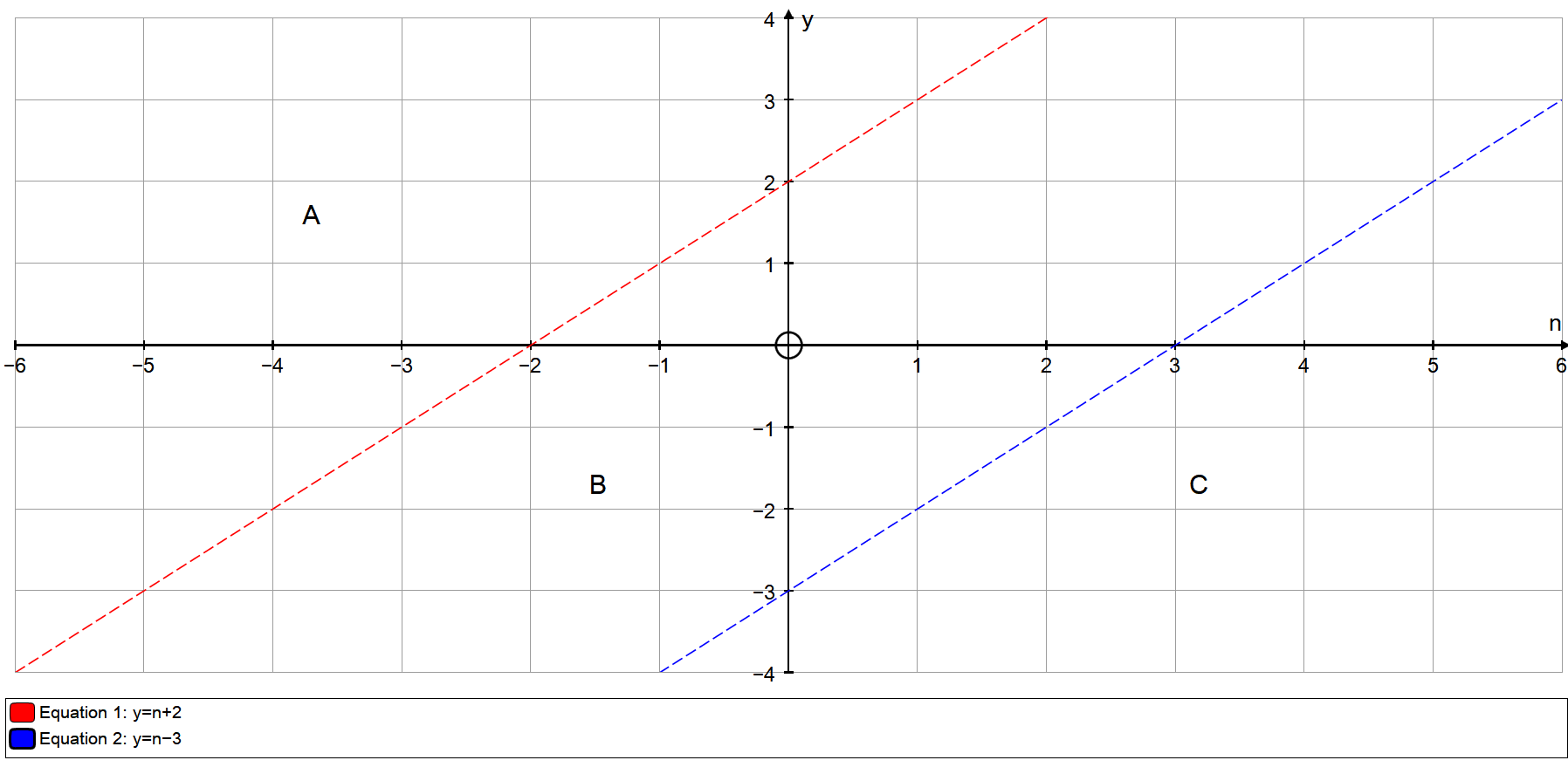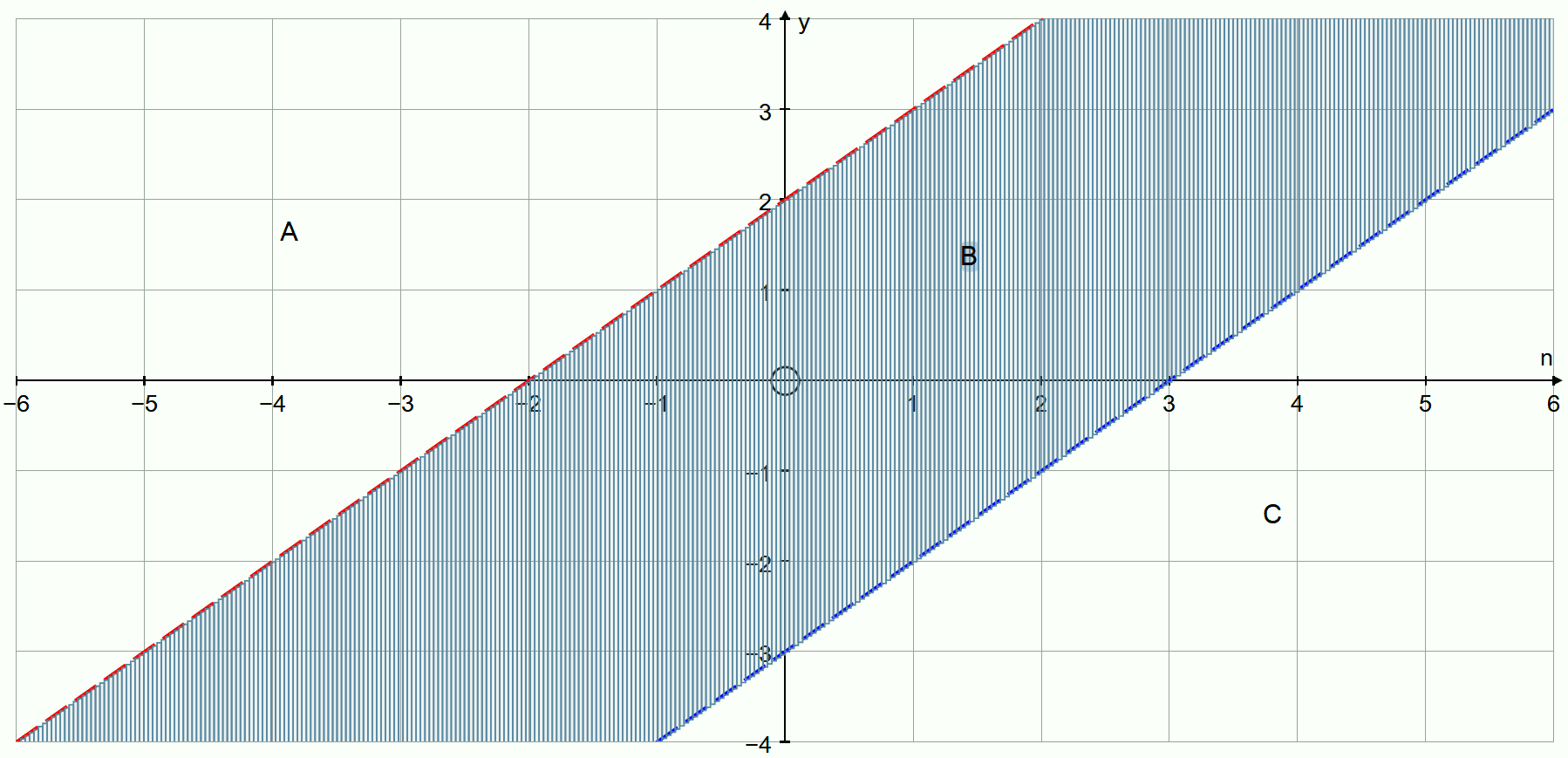How do you solve and graph the compound inequality #4 < n + 6 < 9# ?
1 Answer
See below.
Explanation:
Subtract 6 from each part of the inequality:
To graph:
Make two equations:
We have:
Equation
Graph these two lines. This we give you the boundary between included and excluded regions. Remember to use a dotted line as these are of the for < , > and not of the form
With these plotted, we have three regions A , B and C, we now test coordinates in each region to see which is an included or excluded region.

Region A:
coordinates:
Region B:
coordinates:
Region C
coordinates:
The only region where both conditions are met is region B. Shade region B


